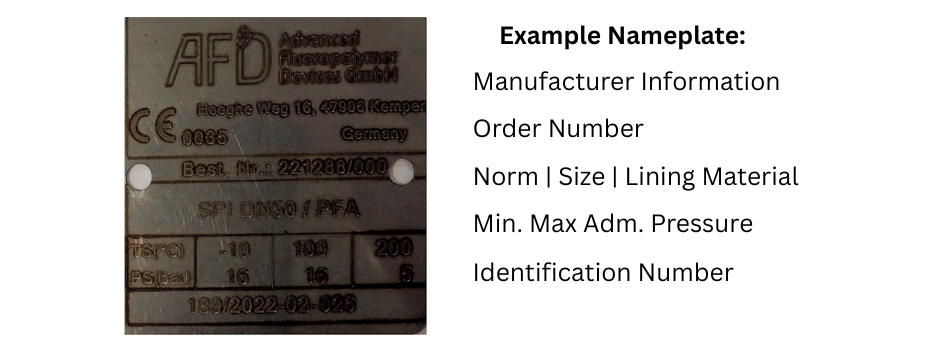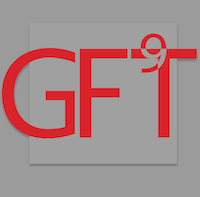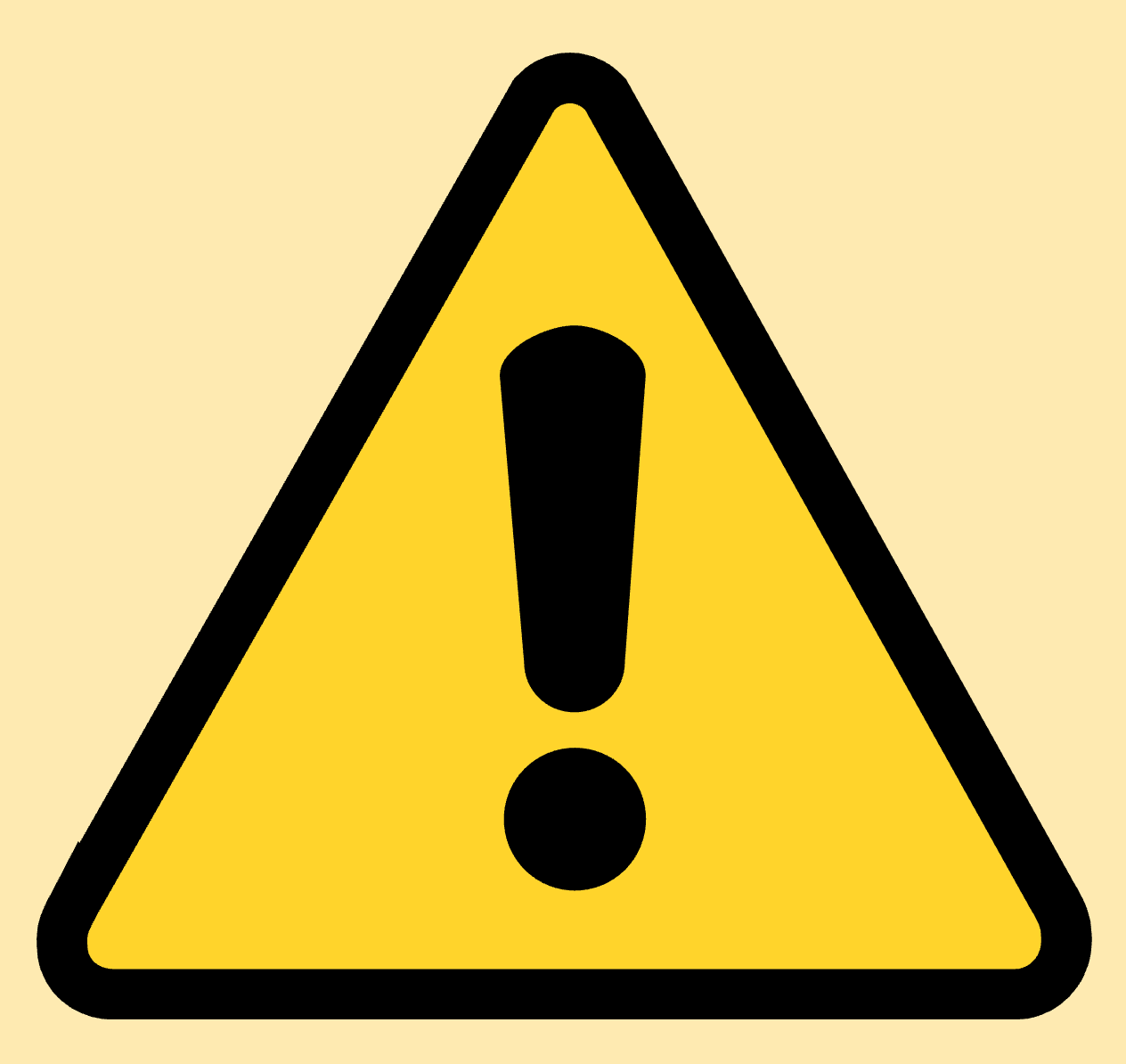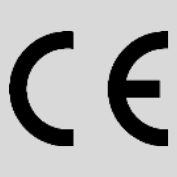
Advanced Fluoropolymer Devices GmbH
Precision Manufacturing Meets Transfer Molding
Installation and Operating Manual
Ball Valve

PFA Lined Ball Valve
Spheron9
This comprehensive manual provides detailed instructions for safe transport, installation, operation, and routine maintenance of your equipment.
Please review all sections carefully before proceeding. Keep this manual accessible for future reference.
Important Safety Notice
Carefully observe these operating instructions before transport, installation, operation, and maintenance!
Failure to follow proper procedures may result in equipment damage, personal injury, or voided warranty.
Manual Information
- Document Version: 1.0
- Last Updated: October 05, 2025
- Document Type: Installation and Operating Manual
- Language: English
Quick Reference Guide
📋 Before You Start
🚚 Transport Guidelines
⚙️ Installation Process
🔧 Operation Manual
🛠️ Maintenance Schedule
📞 Support Contact
| Parameter | Value |
|---|---|
| Name | Spheron9 |
| Operational characteristics | On / Off |
| Design norm | DIN | ANSI |
| Size | DN 15-150 | NPS ½"-10" |
| Flange dimensions | DIN 2501 (PN 16) | ASME B16.10 (Class 150-RF LP) |
| Face to face dimensions | PN (EN 558-1), Series 1 | ANSI-B-16.5 |
| Actuator | DIN 3337 – ISO 5211 |
| Lining | PFA, PFA/UP, PFA/AS, PVDF, PP, UHMW-PE |
| Body | 1.0619 (A216 Gr. WCB), 1.4408 (CF8M) |
| Pressure | up to 16 bar (see P-T Diagram) |
| Temperature range | -60°C to 150°C (see P-T Diagram) |
| Custom | Actuation, Stem Extension, Heating Jacket, Lock |
| Quality | Body 24 bar, Dielectric strength test 20 kV |
| Certificates | EU Pressure Equipment Directive 2014/68/EU, German Clean Air Act (TA-Luft), SIL |

DIN Weight Specifications
| Size DIN | Weight |
|---|---|
| DN 15 | 8 kg |
| DN 25 | 12 kg |
| DN 32 | 18 kg |
| DN 40 | 20 kg |
| DN 50 | 25 kg |
| DN 65 | 50 kg |
| DN 80 | 80 kg |
| DN 100 | 80 kg |
| DN 125 | 85 kg |
| DN 150 | 250 kg |
| DN 200 | 600 kg |
ANSI Weight Specifications
| Size ANSI | Weight |
|---|---|
| NPS ½" | 8 kg |
| NPS ¾" | 12 kg |
| NPS 1" | 20 kg |
| NPS 1½" | 20 kg |
| NPS 2" | 25 kg |
| NPS 3" | 60 kg |
| NPS 4" | 80 kg |
| NPS 6" | 250 kg |
| NPS 8" | 600 kg |
DIN Pipe Screws
| Size | Screws | Tightening Torque [Nm] [Nm/lbs] |
|---|---|---|
| DN 15 | 4 x M12 | 6 |
| DN 20 | 4 x M12 | 8 |
| DN 25 | 4 x M12 | 10 |
| DN 32 | 4 x M12 | 10 |
| DN 40 | 4 x M16 | 20 |
| DN 50 | 4 x M16 | 26 |
| DN 65 | 4 x M16 | 26 |
| DN 80 | 8 x M16 | 25 |
| DN 100 | 8 x M16 | 35 |
| DN 125 | 8 x M20 | 55 |
| DN 150 | 8 x M20 | 65 |
| DN 200 | 12 x M20 | 100 |
ANSI Pipe Screws
| Size | Screws | Tightening Torque [Nm] [Nm/lbs] |
|---|---|---|
| NPS ½" | 4 x ½“ | 45/5 |
| NPS ¾" | 4 x ½“ | 55/6 |
| NPS 1" | 4 x ½“ | 70/8 |
| NPS 1½" | 4 x ½“ | 135/15 |
| NPS 2" | 4 x ⅝“ | 220/15 |
| NPS 3" | 4 x ⅝“ | 400/45 |
| NPS 4" | 8 x ⅝“ | 310/35 |
| NPS 8" | 8 x ¾“ | 1020/115 |
DIN Body Screws
| Size | Screws | Tightening Torque [Nm] [Nm/lbs] |
|---|---|---|
| DN 15 | 4 x M12 | 35/310 |
| DN 20 | 4 x M12 | 35/310 |
| DN 25 | 4 x M12 | 35/310 |
| DN 32 | 4 x M12 | 35/310 |
| DN 40 | 4 x M16 | 45/398 |
| DN 50 | 4 x M16 | 45/398 |
| DN 65 | 4 x M16 | 45/398 |
| DN 80 | 8 x M16 | 50/442 |
| DN 100 | 8 x M16 | 60/531 |
| DN 125 | 8 x M20 | 150/1330 |
| DN 150 | 8 x M20 | 150/1330 |
| DN 200 | 12 x M24 | 175/1549 |
ANSI Body Screws
| Size | Screws | Tightening Torque [Nm] [Nm/lbs] |
|---|---|---|
| NPS ½" | 4 x M12 | 310/35 |
| NPS ¾" | 4 x M12 | 310/35 |
| NPS 1" | 4 x M12 | 310/35 |
| NPS 1½" | 4 x M16 | 398/45 |
| NPS 2" | 4 x M16 | 398/45 |
| NPS 3" | 8 x M20 | 442/50 |
| NPS 4" | 12 x M24 | 531 /80 |
| NPS 8" | 12 x M24 | 1549/175 |
DIN Flow Rate
| Size | KVS Value |
|---|---|
| DN 15 | 180 |
| DN 20 | 180 |
| DN 25 | 180 |
| DN 32 | 180 |
| DN 40 | 270 |
| DN 50 | 270 |
| DN 65 | 380 |
| DN 80 | 380 |
| DN 100 | 380 |
| DN 125 | on request |
| DN 150 | on request |
| DN 200 | on request |
ANSI Flow Rate
| Size | CV Value |
|---|---|
| NPS ½" | 190 |
| NPS ¾" | 190 |
| NPS 1" | 275 |
| NPS 1½" | 275 |
| NPS 2" | 275 |
| NPS 3" | 300 |
| NPS 4" | 300 |
| NPS 6" | 300 |
| NPS 8" | on request |
DIN Actuation Torque
| Size | Actuation Torque [Nm / Lbs] |
|---|---|
| DN 15 | 8 (<3 bar), 8 (6 bar), 10 (10 bar), 80 (16 bar), 80 (max. adm. [Nm]) |
| DN 20 | 8 (<3 bar), 8 (6 bar), 10 (10 bar), 80 (16 bar), 80 (max. adm. [Nm]) |
| DN 25 | 12 (<3 bar), 12 (6 bar), 12 (10 bar), 12 (16 bar), 12 (max. adm. [Nm]) |
| DN 40 | 20 (<3 bar), 20 (6 bar), 20 (10 bar), 25 (16 bar), 250 (max. adm. [Nm]) |
| DN 50 | 25 (<3 bar), 25 (6 bar), 25 (10 bar), 30 (16 bar), 361 (max. adm. [Nm]) |
| DN 80 | 60 (<3 bar), 60 (6 bar), 60 (10 bar), 80 (16 bar), 500 (max. adm. [Nm]) |
| DN 100 | 80 (<3 bar), 80 (6 bar), 90 (10 bar), 170 (16 bar), 500 (max. adm. [Nm]) |
| DN 125 | on request |
| DN 150 | on request |
| DN 200 | on request |
ANSI Actuation Torque
| Size | Actuation Torque [Nm / Lbs] |
|---|---|
| NPS ½" | 8 (<3 bar), 8 (6 bar), 10 (10 bar), 80 (16 bar), 80 (max. adm. [Nm]) |
| NPS ¾" | 8 (<3 bar), 8 (6 bar), 8 (10 bar), 10 (16 bar), 80 (max. adm. [Nm]) |
| NPS 1" | 12 (<3 bar), 12 (6 bar), 12 (10 bar), 12 (16 bar), 12 (max. adm. [Nm]) |
| NPS 1½" | 20 (<3 bar), 20 (6 bar), 25 (10 bar), 30 (16 bar), 250 (max. adm. [Nm]) |
| NPS 2" | 25 (<3 bar), 25 (6 bar), 25 (10 bar), 30 (16 bar), 250 (max. adm. [Nm]) |
| NPS 3" | 60 (<3 bar), 60 (6 bar), 10 (10 bar), 80 (16 bar), 500 (max. adm. [Nm]) |
| NPS 4" | 80 (<3 bar), 80 (6 bar), 90 (10 bar), 170 (16 bar), 500 (max. adm. [Nm]) |
| NPS 6" | on request |
| NPS 8" | on request |

Pressure Temperature Diagram indicates the operating contraints of our Ball Valves in non-vaccum environments.
10. Dimensional Drawings
10.1 Dimensional Measurements DIN

| Size | L | L1 | H | ød | øk | øD | Bolting | Weight |
|---|---|---|---|---|---|---|---|---|
| DN 15 | 130 mm | 58,5 mm | 126 mm | 45 mm | 65 mm | 95 mm | 4 x 14 (M12) | 8 kg |
| DN 20 | 150 mm | 58,5 mm | 126 mm | 58 mm | 75 mm | 105 mm | 4 x 14 (M12) | |
| DN 25 | 160 mm | 52 mm | 126 mm | 68 mm | 85 mm | 115 mm | 4 x 14 (M12) | 12 kg |
| DN 32 | 180 mm | 60 mm | 126 mm | 78 mm | 100 mm | 140 mm | 4 x 18 (M16) | 18 kg |
| DN 40 | 200 mm | 67,5 mm | 200 mm | 88 mm | 110 mm | 150 mm | 4 x 18 (M16) | 20 kg |
| DN 50 | 230 mm | 80 mm | 200 mm | 102 mm | 125 mm | 165 mm | 4 x 18 (M16) | 25 kg |
| DN 65 | 290 mm | 77,5 mm | 220 mm | 122 mm | 145 mm | 185 mm | 4 x 18 (M16) | 50 kg |
| DN 80 | 310 mm | 85,5 mm | 260 mm | 138 mm | 160 mm | 200 mm | 8 x 18 (M16) | 80 kg |
| DN 100 | 350 mm | 94 mm | 270 mm | 158 mm | 180 mm | 220 mm | 8 x 18 (M16) | 80 kg |
| DN 125 | 400 mm | 124 mm | 188 mm | 210 mm | 250 mm | 8 x 18 (M16) | 85 kg | |
| DN 150 | 480 mm | 124 mm | 212 mm | 240 mm | 285 mm | 8 x 22 (M20) | 250 kg | |
| DN 200 | 600 mm | 200 mm | 268 mm | 295 mm | 340 mm | 12 x 22 (M20) | 600 kg |
10.2 Dimensional Measurements ANSI

| Size | L | L1 | H | ød | øk | øD | Bolting | Weight |
|---|---|---|---|---|---|---|---|---|
| NPS ½" | 108 mm | 55 mm | 126 mm | 34,9 mm | 60,3 mm | 88,9 mm | 4 x 15.9 | 8 kg |
| NPS ¾" | 117 mm | 55 mm | 126 mm | 42,9 mm | 69,8 mm | 98,4 mm | 4 x 15.9 | 12 kg |
| NPS 1" | 127 mm | 65 mm | 200 mm | 50,8 mm | 79,4 mm | 108 mm | 4 x 15.9 | 20 kg |
| NPS 1½" | 165 mm | 65 mm | 200 mm | 73 mm | 98,4 mm | 127 mm | 4 x 15.9 | 20 kg |
| NPS 2" | 178 mm | 80 mm | 200 mm | 92,1 mm | 121 mm | 152,4 mm | 4 x 19 | 25 kg |
| NPS 3" | 203 mm | 85 mm | 260 mm | 127 mm | 152,4 mm | 190,5 mm | 4 x 19 | 60 kg |
| NPS 4" | 229 mm | 95 mm | 270 mm | 157,2 mm | 190 mm | 228,6 mm | 8 x 19 | 80 kg |
| NPS 6" | 394 mm | 125 mm | 216 mm | 241 mm | 279 mm | 8 x 22.2 | 250 kg | |
| NPS 8" | 457 mm | 269,9 mm | 330,2 mm | 381 mm | 12 x 25.4 | 600 kg |
11. Sectional Drawing

| Pos. | Item | Material |
|---|---|---|
| 1 | Body | 1.0619 (A216 WCB), 1.4408 (CF-8M) |
| 2 | Lining Body/Ball | PFA, FEP, PFA/AS, PFA/UP, PVDF, UHMW-PE* |
| 3 | Ball/Stem | 1.0619 (A216 WCB), 1.4408 (CF-8M) |
| 4 | Lever | 1.0619 (A216 WCB), 1.4408 (CF-8M) |
| 5 | Seat Rings | PTFE/TFM, PTFE/AS, GF PTFE, o. o. req. *2 |
| 6 | Bellow Packing | PTFE/TFM, PTFE/AS |
| 7 | Packing Gld Follow- er | 1.0619 (A216 WCB), 1.4408 (CF-8M) |
| 8 | Spring Gld Follower | Spring Steel |
| 9 | Bolts and Nuts | Stainless Steel A2, A4, 5.6, o. o. req. |



